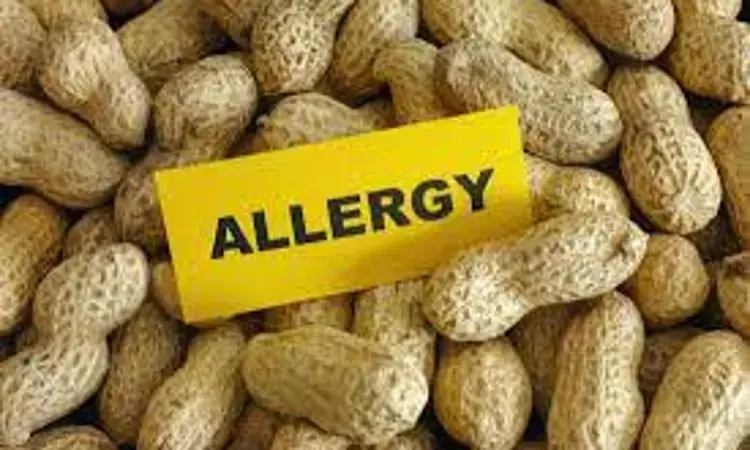- Home
- Medical news & Guidelines
- Anesthesiology
- Cardiology and CTVS
- Critical Care
- Dentistry
- Dermatology
- Diabetes and Endocrinology
- ENT
- Gastroenterology
- Medicine
- Nephrology
- Neurology
- Obstretics-Gynaecology
- Oncology
- Ophthalmology
- Orthopaedics
- Pediatrics-Neonatology
- Psychiatry
- Pulmonology
- Radiology
- Surgery
- Urology
- Laboratory Medicine
- Diet
- Nursing
- Paramedical
- Physiotherapy
- Health news
- Fact Check
- Bone Health Fact Check
- Brain Health Fact Check
- Cancer Related Fact Check
- Child Care Fact Check
- Dental and oral health fact check
- Diabetes and metabolic health fact check
- Diet and Nutrition Fact Check
- Eye and ENT Care Fact Check
- Fitness fact check
- Gut health fact check
- Heart health fact check
- Kidney health fact check
- Medical education fact check
- Men's health fact check
- Respiratory fact check
- Skin and hair care fact check
- Vaccine and Immunization fact check
- Women's health fact check
- AYUSH
- State News
- Andaman and Nicobar Islands
- Andhra Pradesh
- Arunachal Pradesh
- Assam
- Bihar
- Chandigarh
- Chattisgarh
- Dadra and Nagar Haveli
- Daman and Diu
- Delhi
- Goa
- Gujarat
- Haryana
- Himachal Pradesh
- Jammu & Kashmir
- Jharkhand
- Karnataka
- Kerala
- Ladakh
- Lakshadweep
- Madhya Pradesh
- Maharashtra
- Manipur
- Meghalaya
- Mizoram
- Nagaland
- Odisha
- Puducherry
- Punjab
- Rajasthan
- Sikkim
- Tamil Nadu
- Telangana
- Tripura
- Uttar Pradesh
- Uttrakhand
- West Bengal
- Medical Education
- Industry
One-third of peanut allergies and almost all egg allergies resolve by age of six years among kids

According to a recent study published in the Journal of Allergy and Clinical Immunology, almost one-third of peanut allergies and nearly all egg allergies resolve by age 6.
Researchers examined the natural history of egg and peanut allergies in children from age 1 to 6 years. They assessed whether a skin prick test (SPT) result or other clinical factors at diagnosis are associated with the persistence or resolution of food allergy in early childhood.
The HealthNuts cohort consists of 5276 children who were recruited at age 1 year and have been followed prospectively. Children with food allergy at age 1 year (peanut [n = 156] or raw egg [n = 471] allergy ) and children who developed new sensitizations or food reactions after age 1 year were assessed for food sensitization and allergy (confirmed by oral food challenge when indicated) at the 6-year follow-up.
Results
New-onset food allergy developed by age 6 years was more common for peanut (0.7% [95% CI = 0.5%-1.1%]) than egg (0.09% [95% CI = 0.03%-0.3%]). Egg allergy resolved more commonly (89% [95% CI = 85%-92%]) than peanut allergy (29% [95% CI = 22%-38%]) by age 6 years. The overall weighted prevalence of peanut allergy at age 6 years was 3.1% (95% CI = 2.6-3.7%) and that of egg allergy was 1.2% (95% = CI 0.9%-1.6%). The factors at age 1 year associated with persistence of peanut allergy were peanut SPT result of 8 mm or larger (odds ratio [OR] = 2.35 [95% CI 1.08-5.12]), sensitization to tree nuts (adjusted OR [aOR] = 2.51 [95% CI = 1.00-6.35]), and early-onset severe eczema (aOR = 3.23, [95% CI 1.17-8.88]). Factors at age 1 associated with persistence of egg allergy at age 6 were egg SPT result of 4 mm or larger (OR = 2.98 [95% CI 1.35-6.36]), other (peanut and/or sesame) food sensitizations (aOR = 2.80 [95% CI = 1.11-7.03]), baked egg allergy (aOR = 7.41 [95% CI = 2.16-25.3]), and early-onset severe eczema (aOR = 3.77 [95% CI = 1.35-10.52]).
Most egg allergy and nearly one-third of peanut allergy resolves naturally by age 6 years. The prevalence of peanut allergy at age 6 years was similar to that observed at age 1 year, largely owing to new-onset food peanut allergy after age 1 year. Infants with early-onset eczema, larger SPT wheals, or multiple food sensitizations and/or allergies were less likely to acquire tolerance to either peanut or egg.
Reference:
The natural history of peanut and egg allergy in children up to age 6 years in the HealthNuts population-based longitudinal study by Rachel L. Peters, et al. published in the Journal of Allergy and Clinical Immunology
DOI: https://doi.org/10.1016/j.jaci.2022.04.008
Dr. Shravani Dali has completed her BDS from Pravara institute of medical sciences, loni. Following which she extensively worked in the healthcare sector for 2+ years. She has been actively involved in writing blogs in field of health and wellness. Currently she is pursuing her Masters of public health-health administration from Tata institute of social sciences. She can be contacted at editorial@medicaldialogues.in.
Dr Kamal Kant Kohli-MBBS, DTCD- a chest specialist with more than 30 years of practice and a flair for writing clinical articles, Dr Kamal Kant Kohli joined Medical Dialogues as a Chief Editor of Medical News. Besides writing articles, as an editor, he proofreads and verifies all the medical content published on Medical Dialogues including those coming from journals, studies,medical conferences,guidelines etc. Email: drkohli@medicaldialogues.in. Contact no. 011-43720751


